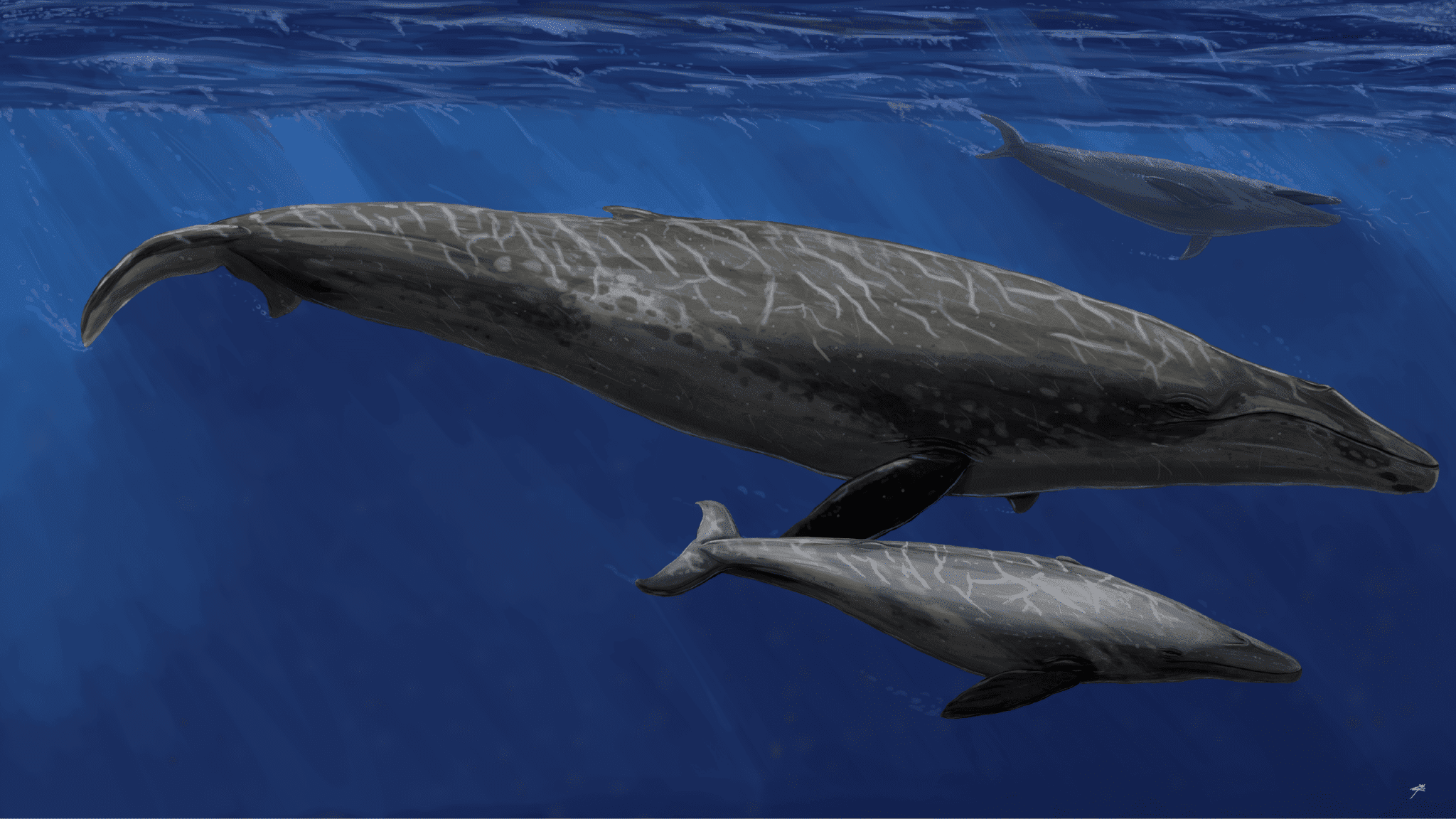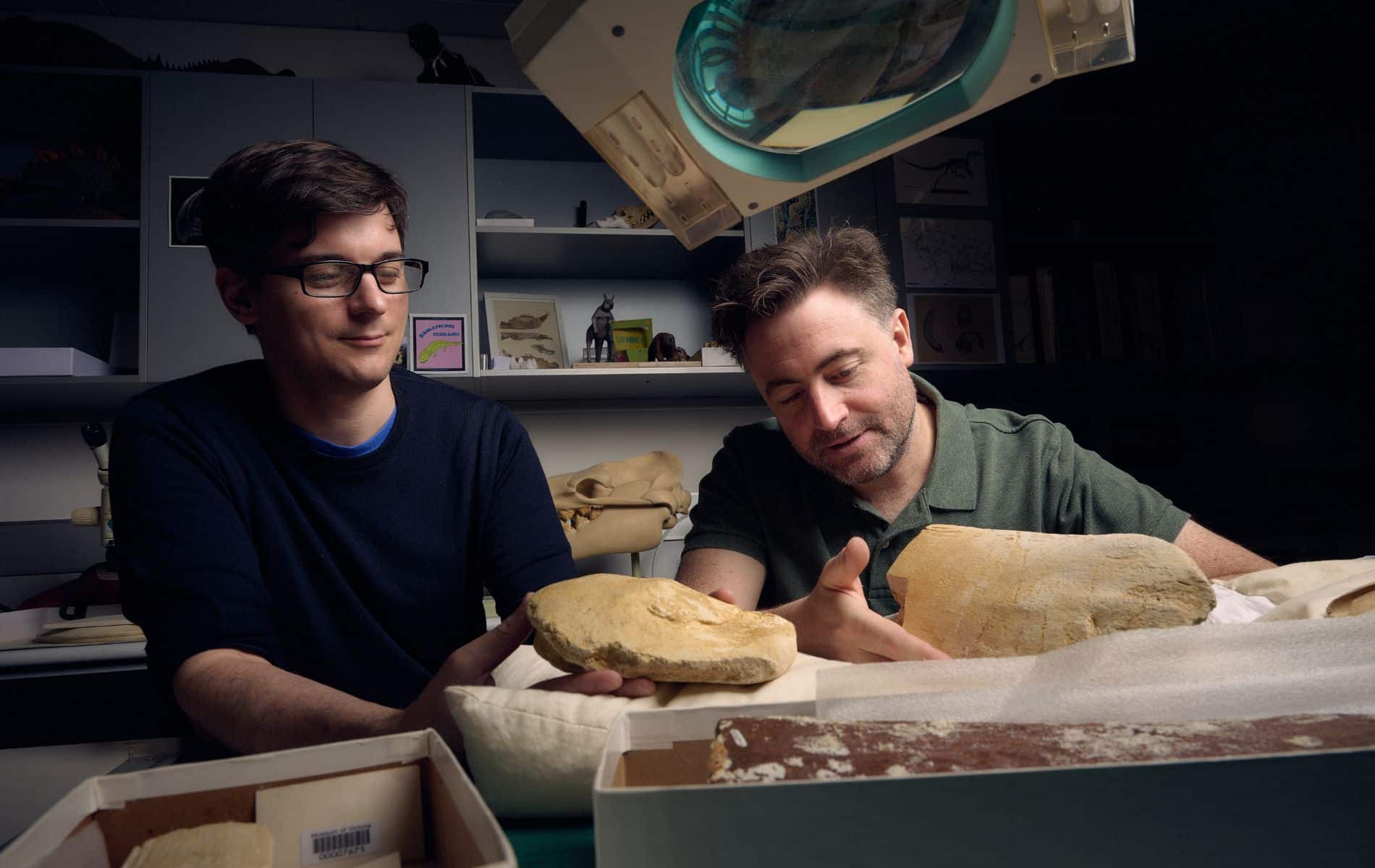It was previously thought that large baleen whales appeared about three million years ago, as temperatures in the Northern Hemisphere grew colder. But recent research moves the point that large whales evolved significantly further back in time.
In 1921, scientists discovered a remarkable fossil on a cliff along the banks of the Murray River in South Australia. It was the front part of the lower jaw of an exceptionally large and ancient whale, dating to between 21 and 16 million years ago. The fossil is believed to be about 19 million years old. Researchers have looked at this whale fossil in a new study. The latest analysis fundamentally changes our understanding of whale evolution.
The largest baleen whale
The fossil is currently in the collection of the Australian Museum Victoria. Interestingly, it went largely unnoticed in the collection until paleontologist Eric Fitzgerald studied the museum piece about a decade ago. He discovered that it belonged to an impressively large baleen whale, the largest at the time.
New analysis
In a new study, Fitzgerald and his colleagues took a closer look at the fossil in question. This has led to some surprising discoveries. Scientists believed that the evolution of huge baleen whales coincided with the beginning of the Ice Age in the Northern Hemisphere, about 3 million years ago. But the remarkably large whale fossil, which is 19 million years old, is much older. This means that the major size change actually occurred about 20 million years ago. This did not happen in the Northern Hemisphere as assumed, but in the Southern Hemisphere.
Southern Hemisphere
The latest discoveries underscore the importance of looking at the Australian and broader Southern Hemisphere fossil record to get a complete global picture of whale evolution. Previously, the main hypothesis based on fossils was found mainly in the Northern Hemisphere. But the Murray River whale fossil now shows that this may not be wise. “The Southern Hemisphere, especially Australia, has long been overlooked when it comes to finding whale fossils,” Fitzgerald says. “But discoveries of whale fossils further south, such as those in the Murray River, are changing our understanding of how whales evolved. They provide a more accurate global picture of what happened in the oceans long ago.
Nine metres
During the analysis, the researchers found that the tip of the baleen whale’s jaw is proportional to its body size. They estimate that this baleen whale was about nine meters long. “Today’s largest whales, such as the blue whale, are as long as a basketball court,” notes co-author James Rule. “About 19 million years ago, the nine-metre-long Murray River whale was already a third of that length. It appears that baleen whales were already on their way to becoming enormous ocean giants.

Driving force
What drives the evolution of giant whales in the Southern Hemisphere? Researchers suspect this is linked to major changes, such as the freezing of Antarctica, shifts in ocean currents and a massive increase in plankton.
Overall, the study turns our understanding of the evolution of the world’s largest animals on its head. Lynley Croswell, chief executive of Museum Victoria, said: “This discovery changes the way we look at the evolutionary history of whales.” More discoveries may already be on the way. For example, Museum Victoria houses the largest collection of whale fossils in Australia. There are currently plans to subject other fossils from the collection to comprehensive examination. In addition, work with the local community and citizen scientists is being considered to discover the largest whale fossil ever discovered in Melbourne: an as-yet-unknown species of whale found in the suburb of Beaumaris.







